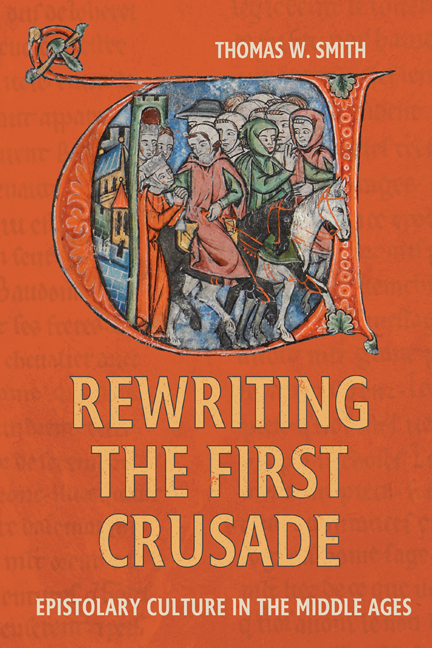Book contents
- Frontmatter
- Dedication
- Contents
- List of Illustrations
- Acknowledgements
- List of Abbreviations
- Introduction
- 1 The Call from the East: The Letters of Alexios I
- 2 The Launch of the Crusade: The Letters of Urban II, 1095–96
- 3 Letters from the Crusader Host, 1097–98
- 4 Letters from the Leaders of the Crusade, 1097–98
- 5 Interpreting the News from the East, 1099–1100
- 6 First Crusade Letters and Medieval Manuscript Cultures
- Conclusion
- Appendix: New Manuscripts of First Crusade Letters
- Bibliography
- Manuscript Index
- General Index
- Crusading in Context
5 - Interpreting the News from the East, 1099–1100
Published online by Cambridge University Press: 09 May 2024
- Frontmatter
- Dedication
- Contents
- List of Illustrations
- Acknowledgements
- List of Abbreviations
- Introduction
- 1 The Call from the East: The Letters of Alexios I
- 2 The Launch of the Crusade: The Letters of Urban II, 1095–96
- 3 Letters from the Crusader Host, 1097–98
- 4 Letters from the Leaders of the Crusade, 1097–98
- 5 Interpreting the News from the East, 1099–1100
- 6 First Crusade Letters and Medieval Manuscript Cultures
- Conclusion
- Appendix: New Manuscripts of First Crusade Letters
- Bibliography
- Manuscript Index
- General Index
- Crusading in Context
Summary
News of the capture of Jerusalem first reached the West in the form of oral messages and stories and written documents. The only surviving letter is that given by Daibert, archbishop of Pisa, the new papal representative on the crusade, Godfrey of Bouillon (in absentia) and Raymond of St Gilles at Laodicea in September 1099, although we can probably assume that there were others, now lost. The arrival of the news in the West appears to have spread rapidly and sparked correspondence between interested contemporaries who sought not only to distribute it but also to interpret it from a theological perspective and to inspire and recruit further warrior–pilgrims to defend the newly acquired Latin conquests. This chapter examines the six surviving letters written in the aftermath of the crusade – which all appear to be authentic – and examines how contemporaries responded to the news from the East and repackaged it. In so doing, it problematises the consensus on the date at which the news arrived from the East, something which affects our understanding of the final stages of the First Crusade, the ‘crusade of 1100–01’, the transmission and reception of the news, and also makes an intervention in the longstanding debate about the original papal aim of the crusade and whether it was conceived as an expedition to recover Jerusalem.
The letter from Daibert and other crusade leaders to the pope and all Christians
The first surviving epistle to transmit the news of the success of the crusade ranks among the most significant letters for the transmission of crusade narrative. Given at Laodicea (Latakia, modern Syria) in September 1099 by elements of the crusade leadership, this missive is apparently the first known written narrative of the capture of Jerusalem and, indeed, of the entire campaign in Outremer, to have circulated in medieval Christendom. Evidence that contemporaries received it as such is furnished by MS Amiens, LESC. 91 D (5174), where the text is preceded by the heading ‘Itinerarium Hierosolimitarum’ (‘Account of the Jerusalem journey’) in a twelfth-century hand (Fig. 1a).
- Type
- Chapter
- Information
- Rewriting the First CrusadeEpistolary Culture in the Middle Ages, pp. 123 - 153Publisher: Boydell & BrewerPrint publication year: 2024

